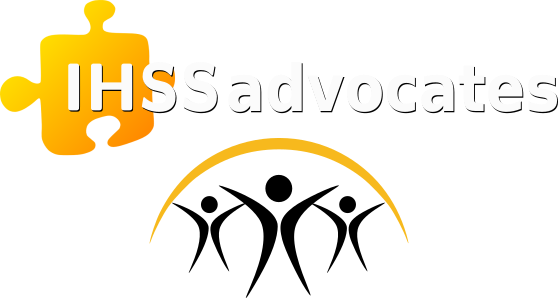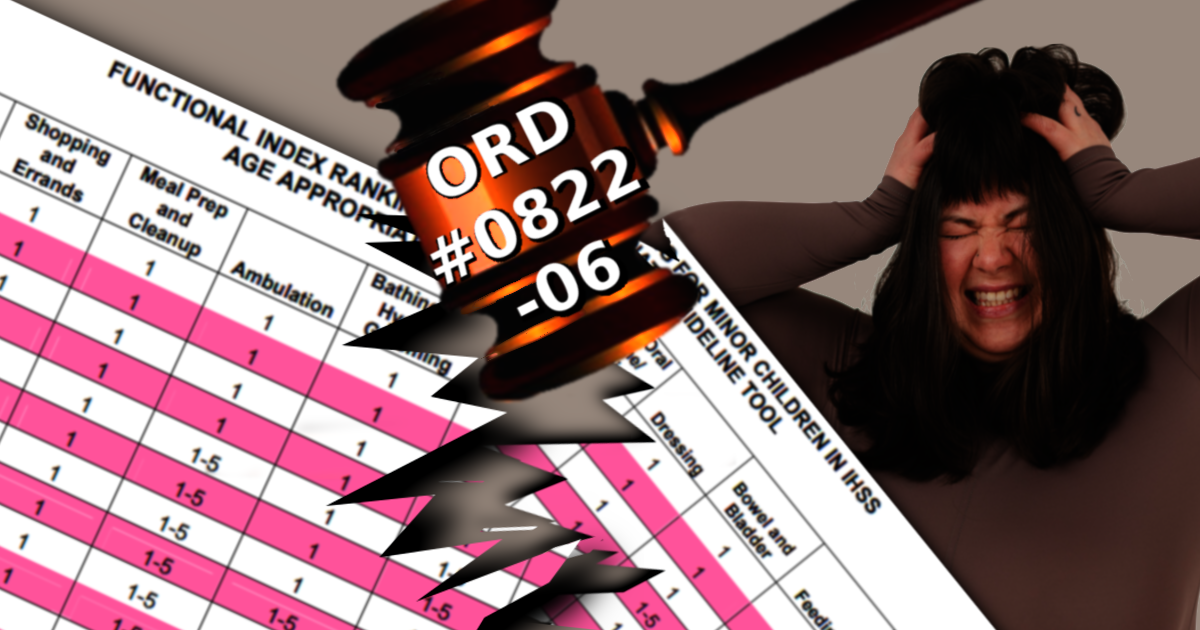Methods for Determining Nonself-Direction
Share Via:
Problem:
CDSS is proposing a qualitative method of determining non-self direction vs quantitative method.
- quantitative method: functional index score determines the outcome
- qualitative method: data collected, scores are given, but the scores don’t guarantee an outcome. There is opinion added by a judge or social worker that determinations non-self direction reguardless of the functional index scores.
What is ORD #0822-06?
ORD #0822-06, proposed by the CDSS, adds a definition to MPP 30-701(N)(3) that states the following:
Non Self-directing individuals, for the purpose of Protective Supervision eligibility, are individuals who due to their cognitive impairment, mental health condition or other condition that impairs their cognitive ability to assess danger and risk of harm, are:
- unable to cognitively asses danger and the risk of harm, and
- at risk of injury, hazard, or accident
The state is proposing adding a qualitative definition of nonself direction and requiring all recipients who have Protective Supervision to be deemed nonself directed. Qualitative definitions are often misinterpreted. This allows an Administrative Law Judge to arbitrarily determine how they’ll deem a recipient nonself directed.
Our Solution:
We are proposing that the definition be quantitative:
A straightforward score based on the functional index (FI) ranks already assigned to a recipient’s impairments in memory, orientation, and judgement.
No need for a social worker or judge to interpret yet another qualitative definition.
Definition of Nonself-Direction
Nonself-direction is already defined in All County Letter (ACL) 15-25 and states:
For the purpose of Protective Supervision eligibility, nonself-direction is an inability, due to a mental impairment/mental illness, for individuals to assess danger and the risk of harm, and therefore, the individuals would most likely engage in potentially dangerous activities that may cause self-harm.
ACL 15-25’s 4-Step Process
A PS recipient must:
- Be nonself-directing due to a mental impairment/illness.
- have the mobility to put themselves in harms way and be likely to engage in a potentially dangerous activity
- need more supervision than a minor of comparable age who is not mentally impaired/mentally ill
- need 24-hour-a-day supervision for the minor to remain safely at home
The Solution is Already A Policy
The combination of MPP 30-756.372 and ACL 14-60 creates the perfect tool for determining whether an individual is worthy of the continued Protective Supervision analysis discussed in ACL 15-25.
MPP 30-756.372
Mental functioning shall be evaluated as follows:
“.372 The recipient’s mental function shall be evaluated on a three-point scale (Ranks 1, 2, and 5) in the functions of memory, orientation, and judgement. This scale is used to determine the need for Protective Supervision.” (See SOC 821)
ACL 14-60
The Nursing Facility Level of Care standard:
Second option: Have a combined Functional Index (FI) Rank of 6 or higher in mental functioning (memory, orientation, and judgement).
ALJs Already do this:
Using evidence, an ALJ assigns FI ranks for memory, orientation, and judgment. But there is no set “score” that results in the determination of “nonself-direction”.
We propose the Nursing Facility Level of Care, as it relates to mental functioning, should be incorporated into the regulations to set a “score” of 6 or greater as the determinant of “nonself-direction”
This isn’t the only issue we run into
We fight for families against misinterpretations on all four steps of the ACL 15-25 process
Our comment letter alludes to some of these other points:
- Age should not be a factor in steps 1 and 2
- Predictability of behavior is not a reason to find an individual “not nonself-directing”
- Specific behaviors are not predictable if they do not consistently occur exclusively at the same time of the day
More IHSS videos by IHSSadvocates
Denied Protective Supervision?
Click the button below to get a free advocate evaluation of your child’s IHSS Protective Supervision case.

